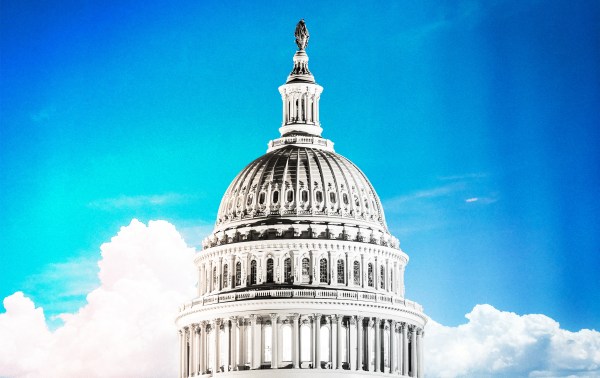Just weeks into the school year, hundreds of schools in Colorado, Illinois, Indiana, Michigan, Missouri, Ohio, Pennsylvania, Texas, and elsewhere closed up shop or moved to remote learning. This time the culprit isn’t a resurgence of COVID-19; it’s record-high temperatures and struggling (or non-existent) HVAC systems.
Now many are asking: After Congress passed the COVID-related relief bills by March 2021—the Cares Act, the Coronavirus Response and Relief Supplemental Appropriations (CRRSSA) Act, and the American Rescue Plan, totaling $189.5 billion—why haven’t more schools updated their HVAC systems when ventilation was a primary concern during the pandemic.
It’s complicated, say some education analysts. “These school districts aren’t spending it foolishly, but it was a lot of money chasing a problem after the fact with loose requirements, and so you’re going to get a big mixed grab bag of what it was spent for,” Nat Malkus, deputy director of education policy at the American Enterprise Institute, tells The Dispatch.
Aging school HVAC systems predate the pandemic.
As of 2019, 41 percent of the country’s 100,000-plus schools reported needing to update or replace cooling systems or the HVAC entirely, according to a 2020 Government Accountability Office report. HVAC-related problems led to issues with indoor air quality and in some cases “caused schools to adjust schedules temporarily,” the report said.
A 2021 survey of teachers, principals, and district leaders by the EdWeek Research Center found that the top maintenance issue schools reported (at 49 percent) was “urgent concerns” around heating and cooling problems. Only 20 percent of respondents for districts in the northern U.S. indicated their schools even had air conditioning (compared to 88 percent in the South).
“It’s fairly common to see rural schools that have facilities that haven’t had major upgrades since the ‘60s or ‘70s,” Corey Metzger, the founder of an Iowa-based engineering consulting firm, tells The Dispatch. He also chairs a committee for the American Society of Heating, Refrigerating, and Air-Conditioning Engineers. “They don’t have cooling, don’t have what we would consider adequate ventilation today.”
When COVID-19 hit and raised concerns about ventilation in crowded spaces, Metzger’s team fielded questions from school districts: “The most common question we got for schools was what to do for facilities that didn’t have ventilation.”
Some school systems opted for immediate solutions, such as “interim air cleaners” or other technologies, like air purifiers that can be set up in individual classrooms. A 2021 Centers for Disease Control and Prevention (CDC) survey found that incidences of COVID-19 were 39 percent lower in schools that took steps to improve ventilation either through dilution (opening doors, using fans) or in combination with filtration methods, such as installing HEPA filters. Some may have fallen for dubious technologies when it came to spending their pandemic relief funds.
“Schools don’t employ HVAC engineers,” Jose Jimenez, an atmospheric scientist at the University of Colorado, tells The Dispatch. “They have some person who does the maintenance, who normally is overworked, or who is not super knowledgeable about this stuff. Now suddenly, the federal government says, ‘Oh, there are these millions of billions of dollars for you.’”
Some school districts, meanwhile, simply prioritized other needs, such as personal protective equipment or technology to allow students to continue remote learning. In 2021, for example, the Milwaukee School Board voted down using $140 million to add air conditioning to its 28 schools. The board instead funded retroactive hazard pay for staff, technology upgrades, tutoring, and health initiatives.
But updating or installing HVAC systems was a priority for some schools. Districts around the country were expected to spend about $5.7 billion on HVAC with COVID-19-related federal relief funds, a 2022 analysis by education policy think tank FutureEd found. And an April 2023 CDC survey found that 33.9 percent of school districts upgraded or replaced their HVAC systems since the start of the COVID-19 pandemic.
Yet even those districts that did prioritize new HVAC systems ran into red tape and supply chain issues. “You can’t get the HVAC replaced in three months,” Metzger says. A 2022 survey from The School Superintendents Association found that some 55 percent of school districts planned to spend some of their funds on facility maintenance, but over half of school district leaders said they needed an extension of a September 2024 deadline to appropriate the money for HVAC (and other) construction projects.
That time lag affected Granite City High School in St. Louis last week, which switched to virtual schooling because of a heatwave rolling across the Midwest. The school is in the process of installing a new air conditioning system, but its current one couldn’t handle temperatures reaching into the triple digits. The school “is in the final stages of completing a summer HVAC project at Granite City High School. Currently, the old system is still in place, but is heavily burned by the excessive temperatures,” Superintendent Stephanie M. Cann wrote to parents in a letter announcing the switch.
One parent of a high school student in Danville, Indiana, said he was told by the school that even though the air conditioning system was broken, the district wasn’t planning to fix it because they were going to replace it with a new system. “They just said they’re going to wait it out for the rest of the summer,” the father told local media.
And yet coming up with any definitive answer for why school districts didn’t spend more on HVAC replacements is complicated by one key fact, says Malkus, the AEI scholar: Congress didn’t require detailed reporting on how school systems used that funding. “We don’t really know what they spent it on,” he said.






Please note that we at The Dispatch hold ourselves, our work, and our commenters to a higher standard than other places on the internet. We welcome comments that foster genuine debate or discussion—including comments critical of us or our work—but responses that include ad hominem attacks on fellow Dispatch members or are intended to stoke fear and anger may be moderated.
With your membership, you only have the ability to comment on The Morning Dispatch articles. Consider upgrading to join the conversation everywhere.